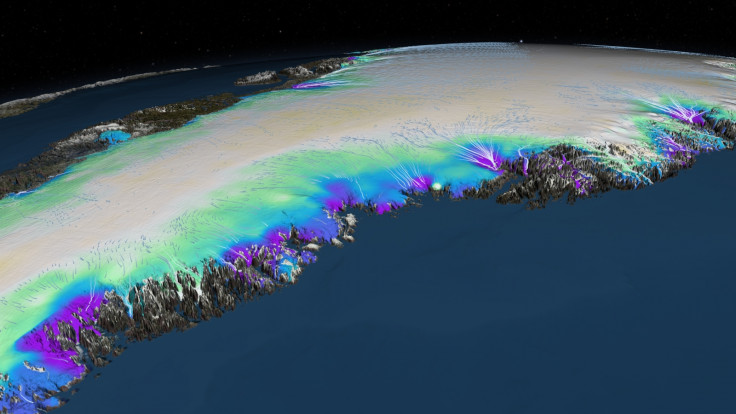Massive Greenland ice sheet 'melting more rapidly than believed'

The Greenland ice sheet shed about 243 gigatonnes of ice per year from 2003-09. Equivalent to about 277 cubic kilometres of ice, this is enough to raise oceans by about 0.68 millimetres per year.
Current ice sheet models are too simplistic and cannot accurately predict the future of the massive Greenland ice sheet, says a new study that suggests the region could lose ice more rapidly in future than thought.
The Greenland Ice Sheet is the second-largest body of ice on Earth and if it melts completely oceans could rise by 20 feet.
The new estimates of annual ice loss were arrived at by Buffalo university scientists using high spatial resolution.
Led by geophysicist Beata Csatho, PhD, an associate professor of geology at the University of Buffalo, the project used Nasa satellite and aerial data to reconstruct how the ice sheet changed at nearly 100,000 locations from 1993 to 2012.
The team developed a computational technique to merge Nasa satellite data and those from aerial missions.
The Greenland ice sheet is the second largest body of ice on Earth and could raise sea levels by 20 feet if it melts completely.
The figures are averages as ice loss varied from year to year and from region to region.
The research suggests that activity at the four glaciers studied in most simulations may not be representative of what is happening with glaciers across the ice sheet. The team identified areas of rapid shrinkage in southeast Greenland that most models don't acknowledge.
"There are 242 outlet glaciers wider than 1.5 km on the Greenland Ice Sheet, and what we see is that their behavior is complex in space and time," Csatho says.
In the study, scientists found that some of Greenland's glaciers thickened even when the temperature rose. Others exhibited accelerated thinning. Some displayed both thinning and thickening, with sudden reversals.
The team divided Greenland's 242 glaciers into seven major groups based on their behaviour from 2003-09.
"Understanding the groupings will help us pick out examples of glaciers that are representative of the whole," Csatho says. "We can then use data from these representative glaciers in models to provide a more complete picture of what is happening."
In a new project, she and colleagues are investigating why different glaciers respond differently to warming.
The study is published in the Proceedings of the National Academy of Sciences.
© Copyright IBTimes 2025. All rights reserved.





















